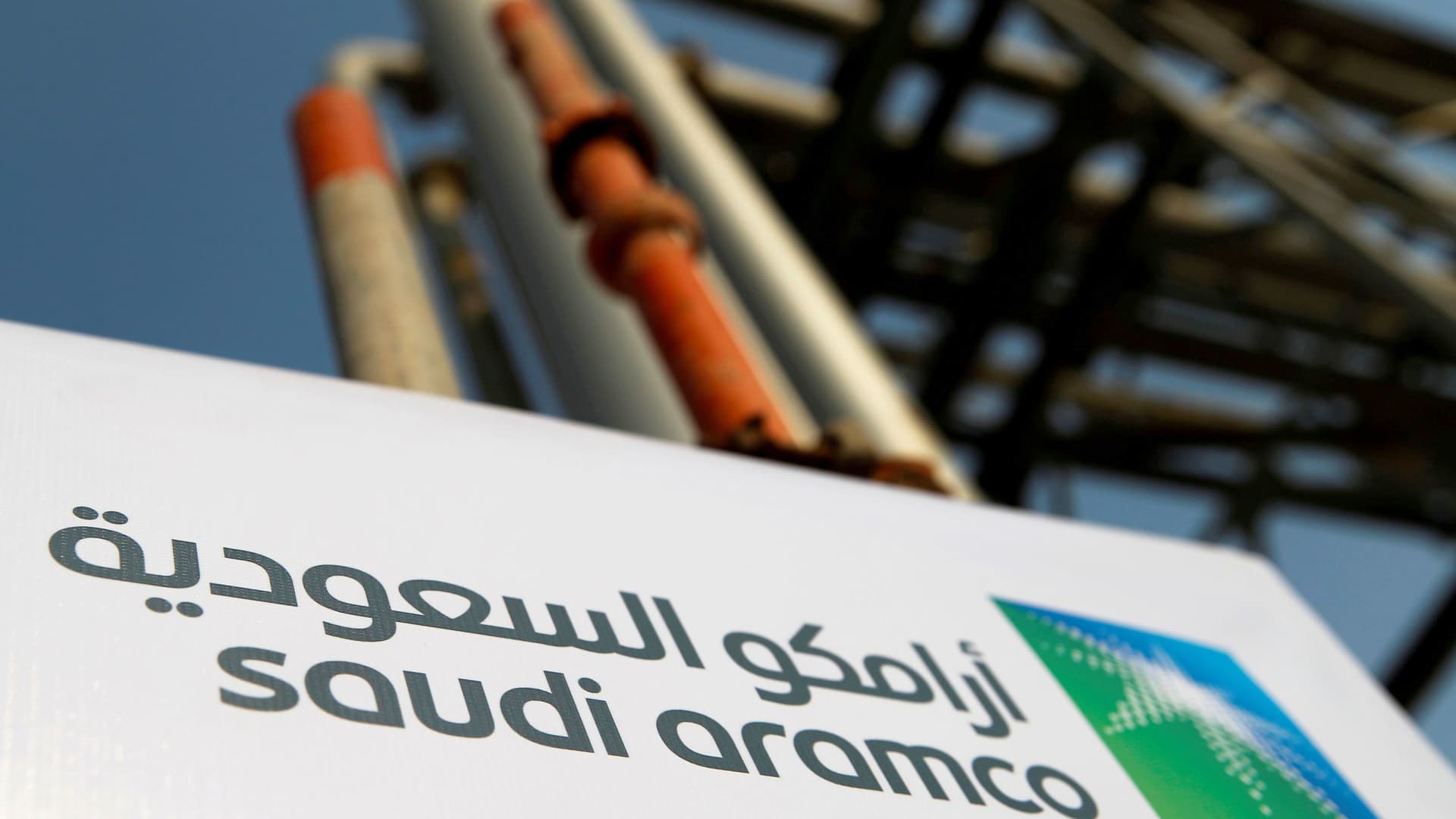Saudi Aramco said strong market conditions helped to push its second quarter net income to $48.4 billion, up from $25.5 billion a year earlier.
Maxim Shemetov | Reuters
Saudi oil giant Aramco on Monday announced a partnership with Siemens Energy AG to develop a small-scale direct air-capture “test unit” in an attempt to manage emissions.
The test unit will be built in Dhahran, Saudi Arabia and finished in 2024, according to a statement from Aramco on Monday.
Direct air-capture, or DAC, works by extracting carbon dioxide that has already been emitted into the atmosphere. The extracted CO2 can then be condensed into solid stone-like formations or liquefied to be stored underground.
DAC is the most expensive method of carbon capture, according to the International Energy Agency. It’s generally cheaper to remove CO2 at the source, before it’s emitted into the air.
The big price tag attached to DAC along with questions of its efficacy have made some climate scientists skeptical of its viability as a long-term emissions reduction strategy.
“From a physics point of view, we just made the problem thousands of times harder,” said Jonathan Foley who leads the climate solutions nonprofit Project Drawdown. “Imagine trying to remove 400 things out of a million and do it in the air. Then, efficiently liquefy this stuff and put it below ground. That’s a huge engineering marvel…to do it at the scale of billions of tons is science fiction right now.”
Foley added that DAC machines themselves take a lot of energy to get running, which eats away at whatever carbon reduction they do achieve.
But despite obstacles to scaling DAC, many companies, especially tech giants, are pouring investments into developing the technology. For example, Amazon announced last month that it would provide funding for the world’s largest deployment of DAC, and a coalition of tech companies led by Stripe has launched a public benefit company called Frontier to invest in carbon-capture startups and projects.
Extracting carbon from the atmosphere is attractive to companies with large carbon footprints, because it would allow them to keep emitting with a reversal mechanism after the fact.
“Fossil fuel companies would love to be able to keep emitting from fossil operations while offsetting those emissions via cost-effective direct air capture projects — that’s kind of a perfect world for them, if they can get there,” said Cara Horowitz, the executive director of UCLA’s Emmet Institute on Climate Change and the Environment.
“And even if they can’t get there, investing in the development of DAC allows them to tout efforts to achieve net-zero goals in ways that don’t involve reducing use of fossil fuels.”
So far, experts say, the technology is unproven at scale.
“I would love a machine like this to actually work. Wouldn’t that be great? You just turn on a machine that sucks everything out of the sky,” said Foley. “But sorry, it’s a lot easier not to emit it than it is to take it back out again. That’s just thermodynamics.”
The DAC collaboration between Aramco and Siemens Energy is still in early phases.
A Siemens Energy spokesperson told CNBC that once the test unit is complete next year, the companies will consider taking the technology into an official pilot phase. Only after that would they pursue scaling it commercially.
Given DAC’s adolescence, both oil companies are invested in other clean energy technology projects.
The spokesperson for Siemens Energy said that the company has invested in hydrogen, wind, nuclear fusion and others. Meanwhile, Aramco also has projects in hydrogen and geothermal energy.

